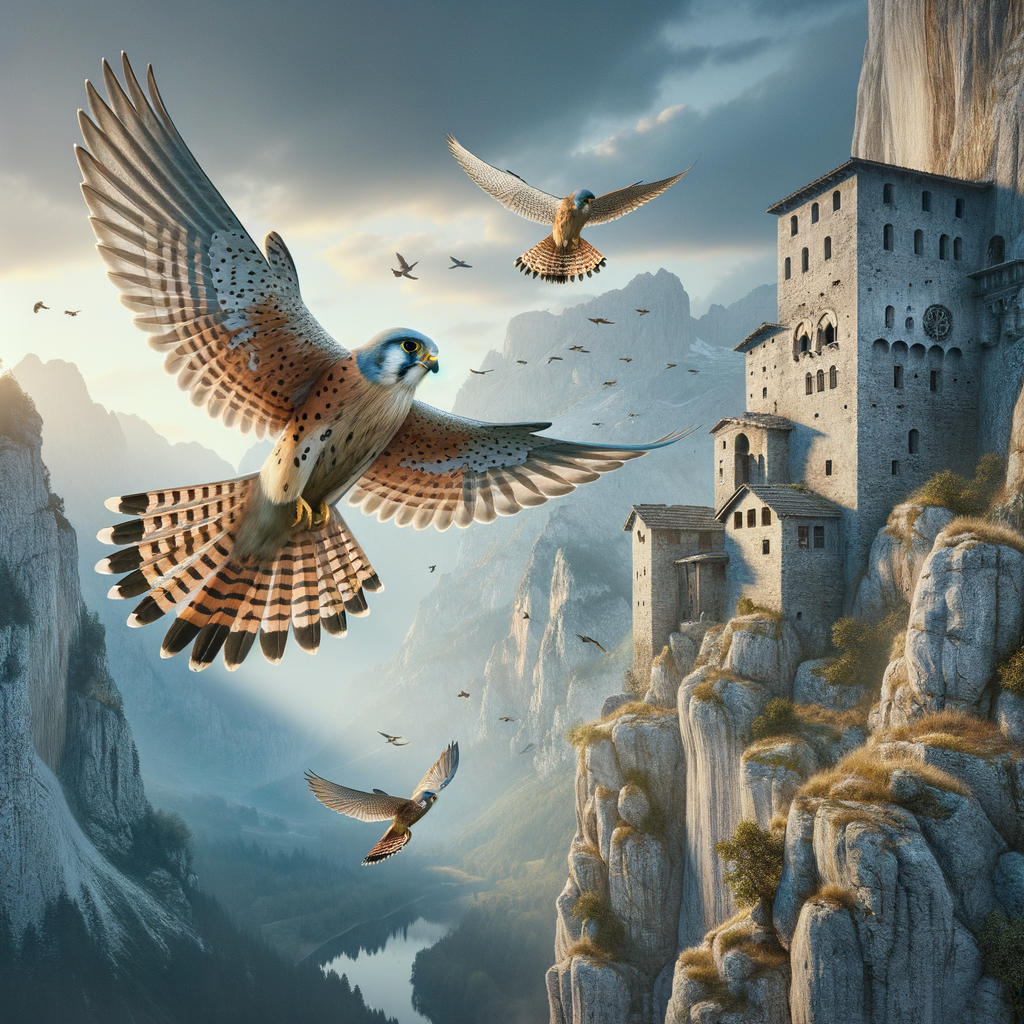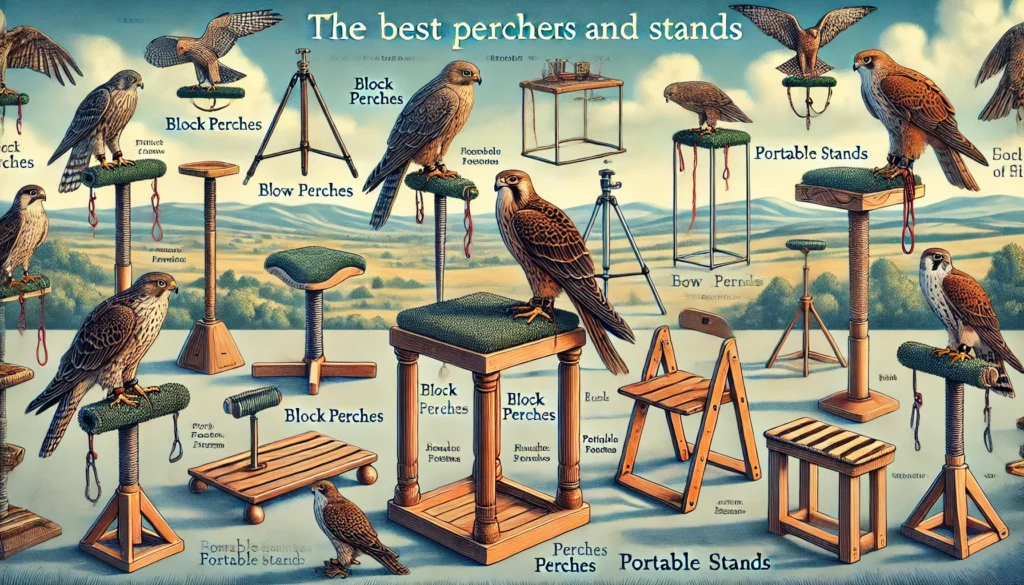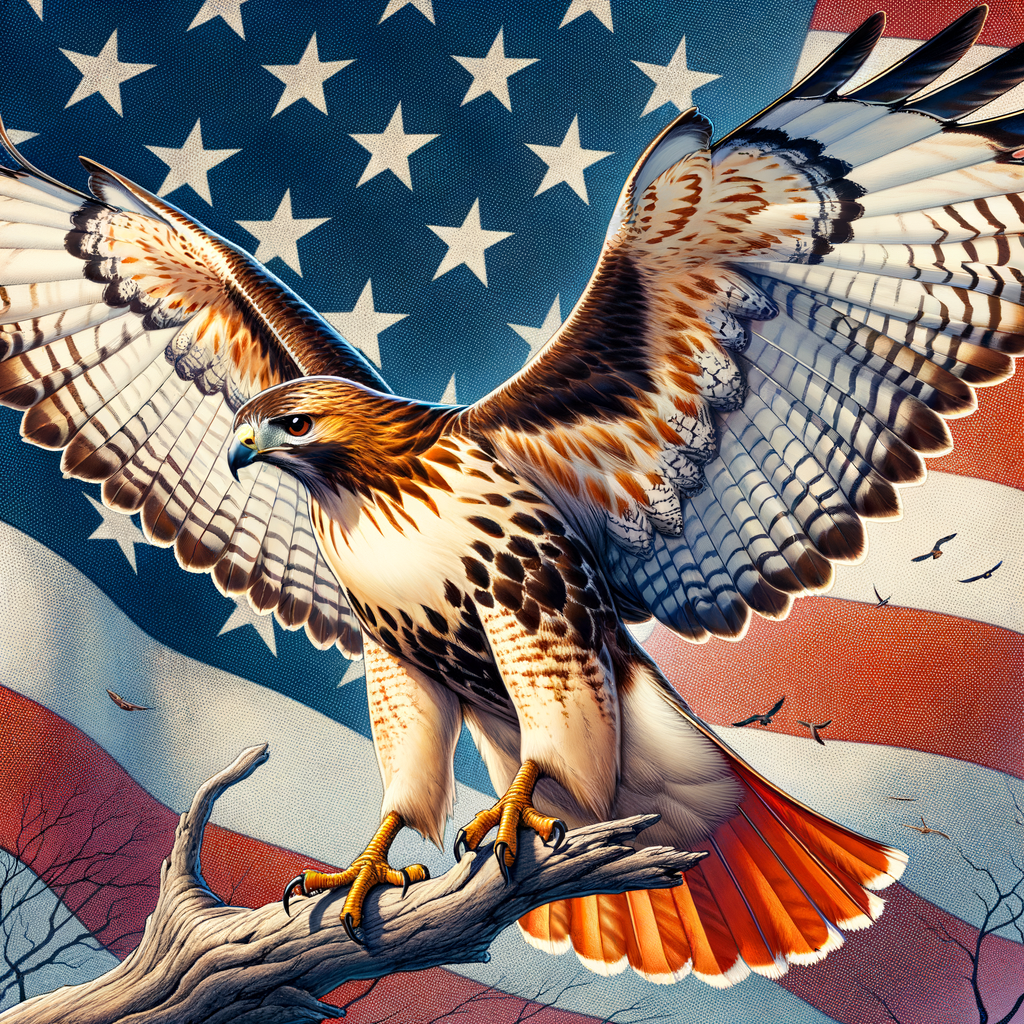Understanding Lesser Kestrels: Fascinating Facts and Information
- Overview of Lesser Kestrels: Lesser Kestrels are small falcons known for their exceptional hunting skills and graceful flight.
- Physical Appearance: They have a slender body, long wings, and a long tail. Males and females have different coloring, with males being more vibrant.
- Habitat: Lesser Kestrels prefer open grounds like meadows and savannas. They are often found in Europe, Asia, and parts of Africa.
- Diet: These birds primarily feed on insects, especially grasshoppers. They also eat small rodents and birds.
- Behavior: Lesser Kestrels are social birds, often seen in flocks. They are known for their hovering flight when hunting.
- Breeding: They nest in colonies, using cliffs, buildings, or old nests of other birds. Females lay 3-6 eggs, and both parents care for the chicks.
- Migration: Lesser Kestrels are migratory birds. They travel to warmer regions during winter and return to breeding grounds in spring.
- Conservation Status: These birds are considered vulnerable due to habitat loss and pesticide use, which reduces their food supply.
- Interesting Fact: Lesser Kestrels have a unique ability to see ultraviolet light, helping them detect trails of their prey.
Discovering the Secrets of Lesser Kestrels: A Flight into Fascination
Hello there, fellow bird enthusiasts! Imagine strolling through the lush green fields of Ireland, where the gentle breeze rustles the leaves and the sky is painted with soft hues of blue. Suddenly, your eyes catch a glimpse of a majestic lesser kestrel, soaring gracefully in the skies above, much like a well-known folklore hero navigating the peaks and valleys of the Emerald Isle.
At Learn Falconry, your trusted source for everything related to the ancient art of falconry, we’re thrilled to take you on a journey into the world of these captivating birds. Lesser kestrels are like the hidden gems of the bird kingdom’small in size but mighty in charm and agility. They play a crucial role in the ecosystem, much like the leprechauns in Irish tales who keep nature’s balance in check.
In this article, we’ll reveal the intriguing lives of lesser kestrels, exploring their natural habitats, their unique behaviors, and why they are so important to our environment. Whether you’re a seasoned falconer or new to the world of birds, you’ll find tales and insights that will spark your curiosity and deepen your appreciation for these splendid creatures. So, grab your metaphorical walking stick, and let’s travel together through the enchanting world of lesser kestrels. Believe us, you’ll want to stay until the very end!
Characteristics of the Lesser Kestrel
The lesser kestrel is a small bird of prey that belongs to the falcon family. It boasts a striking appearance with slate-grey wings and a rusty-red back. Weighing between 100-200 grams, it’s one of the more diminutive falcons. Despite its size, it’s known for its agility and swift flying capabilities which make it an excellent candidate for falconry.
Unlike some of its larger relatives, the lesser kestrel primarily feeds on insects and small vertebrates. This dietary preference makes it easier to manage and train, especially for beginners who might be intimidated by larger prey requirements.
Learn more about the different species of falcons here.
Introduction to Lesser Kestrel Falconry
Lesser kestrel falconry is a fascinating practice that’s gaining popularity due to the bird’s manageable size and friendly disposition. These birds are often recommended for those new to falconry because of their less aggressive nature compared to larger raptors.
To get started with lesser kestrel falconry, you’ll need some essential equipment. This includes falconry gloves, bells and telemetry, and suitable perches. Our falconry equipment page provides a comprehensive list of the gear you’ll need.
Training a lesser kestrel requires patience and dedication. Falconers typically use positive reinforcement techniques to build trust and encourage desired behavior. If training birds fascinates you, explore various training techniques we recommend.
Historical Significance of the Lesser Kestrel
The lesser kestrel has held an important place in cultural traditions globally. Historically, these birds were often observed in ancient texts and depicted in medieval artwork. Their role wasn’t just limited to hunting; they were also esteemed for their symbolic significance in various cultures.
For a detailed timeline on the history and evolution of falconry techniques, check out our falconry history pages.
Lesser Kestrel in Modern Falconry
In contemporary falconry, the lesser kestrel continues to shine. Their relatively calm nature and ease of training have made them a favorite among modern-day falconers. With the advent of new technology, training and tracking these birds has become more efficient than ever. We now have GPS trackers, modern telemetry systems, and even drones to assist in training.
For insights into the role of technology in falconry, visit our page on using technology in falconry.
Conservation Efforts
Conservationists have paid special attention to the lesser kestrel as their populations have experienced fluctuations due to habitat loss and other environmental factors. Falconry plays a crucial role in conservation by not only preserving the species through breeding programs but also raising awareness about their ecological importance.
Discover how falconry aids in conservation efforts here.
Getting Started with Lesser Kestrel Falconry
If you’re interested in starting your journey with the lesser kestrel, it’s essential to understand the fundamentals. From acquiring the right gear to mastering basic training techniques, we have all the resources you need to become proficient.
Begin your falconry adventure now by visiting our beginner’s guide to falconry.
Embark on an exciting journey with the lesser kestrel and immerse yourself in the captivating world of falconry. Whether you’re a seasoned falconer or just starting, the lesser kestrel offers an enriching experience that bridges historical traditions with modern techniques. Dive deeper into this fascinating practice with the wealth of information available on Learn Falconry.
Deep Dive Into Lesser Kestrels
Lesser Kestrels are fascinating birds with distinct characteristics and behaviors. Let’s explore some specific aspects of these incredible creatures.
Breeding Range
The Lesser Kestrel breeds primarily in the Palearctic region, which spans parts of Europe and northern Asia. This region lies roughly between 30 and 50 degrees North latitude. They typically breed up to 500 meters above sea level. The map below illustrates the breeding range of the Lesser Kestrel.
Habitat
Lesser Kestrels are adaptable when it comes to their habitat. They can be found in:
- Bushed areas
- Wooded lands
- Open grasslands
- Cultivated fields
Moreover, they prefer nesting on mountain slopes, gorges, and rocky terrains, where there are open areas suitable for hunting.
Migration
These kestrels migrate to warmer climates during the winter months. They typically travel to Africa, south of the Sahara Desert. The migration peaks in northern Tanzania and southern Kenya from February to April.
Conservation Status
The conservation status of the Lesser Kestrel is critically endangered. Since the 1950s, breeding numbers have plummeted by 95%, with significant declines in their European ranges.
Conservation Efforts
In Bulgaria, dedicated conservation efforts have shown promising results. Over the past decade, three new colonies have been established. These colonies have seen over 40 pairs and a remarkable 1,315 juvenile birds hatched and released into the wild.
Diet
Lesser Kestrels are carnivorous and have a diverse diet that includes:
| Prey Type | Examples |
|---|---|
| Small mammals | Voles |
| Other small animals | Young rabbits, birds |
| Insects | Various species |
| Others | Earthworms |
Behavior
Lesser Kestrels are social birds and are often seen in loose flocks. They exhibit communal roosting behavior, sometimes with thousands of birds roosting together in a single tree.
Call
The call of the Lesser Kestrel is distinctive, characterized by a high-pitched “ki-ki-ki-ki-ki-ki.”
Breeding
These birds breed in colonies. The typical clutch size is between 4 to 6 eggs. The incubation period lasts 28 to 31 days, and parents continue to feed their young for about 2 to 4 weeks post-hatching.
GPS Tagging and Monitoring
The Lesser Kestrel GPS Tagging project is an innovative effort aimed at releasing 170 nestlings over four years, starting in 2021. Juvenile kestrels are fitted with non-invasive GPS loggers to track their movements and identify potential threats during migration.
Stakeholder Engagement
This project involves collaboration among various stakeholders, including environmental rangers, government bodies, and local organizations. They work together to investigate and address mortality incidents effectively.
Public Awareness
Public awareness is a significant component of the project. Educational activities, such as student participation in the release of nestlings, aim to raise awareness about Lesser Kestrel conservation.
Funding and Monitoring
The Lesser Kestrel GPS Tagging project receives funding from supportive members and business partners. GPS tagging provides unexpected insights into the species’ behavior, aiding in identifying and addressing conservation challenges.
Conservation Goals
The overarching goal of this project is to enhance the Lesser Kestrel population by addressing the knowledge gap concerning juvenile mortalities. Improved conservation efforts are achieved through collaborative endeavors and heightened public awareness.
The Future of Lesser Kestrels: Hope and Conservation
In the fascinating world of the Lesser Kestrel, we’ve learned how these small yet mighty falcons face numerous challenges but also opportunities for a brighter future. Their journey from breeding in Europe and northern Asia to wintering in Africa highlights their incredible migratory patterns. Unfortunately, the Lesser Kestrel is critically endangered, with a shocking 95% decline in breeding numbers since the 1950s. Despite these grim statistics, there’s a beacon of hope.
Conservation efforts are making a noticeable difference. For instance, in Bulgaria, dedicated projects have led to the formation of new colonies, helping hatch and release over 1,300 juvenile birds into the wild. Additionally, innovative strategies like GPS tagging are providing invaluable data to further protect these majestic falcons. By tracking their movements, we can better understand and mitigate the dangers they encounter.
Public awareness and involvement are crucial. Through educational programs and collaborative initiatives, many people, including students, are playing an active role in the conservation of Lesser Kestrels. This collective effort is not only preserving a species but also fostering a deeper connection between humans and nature.



